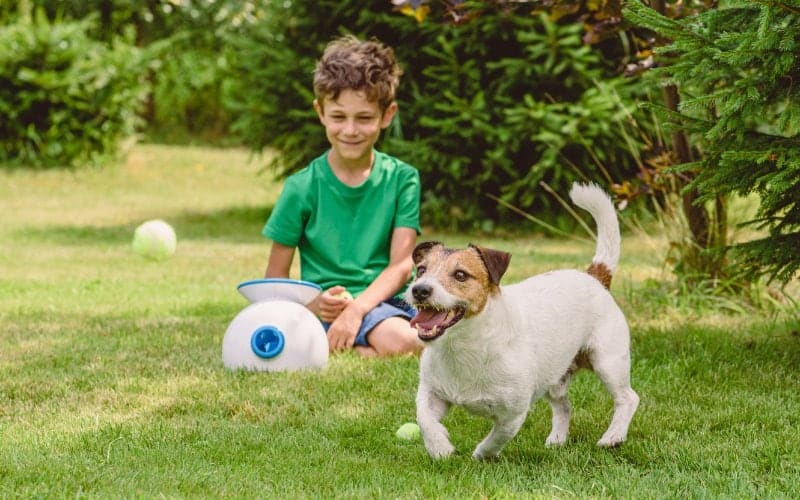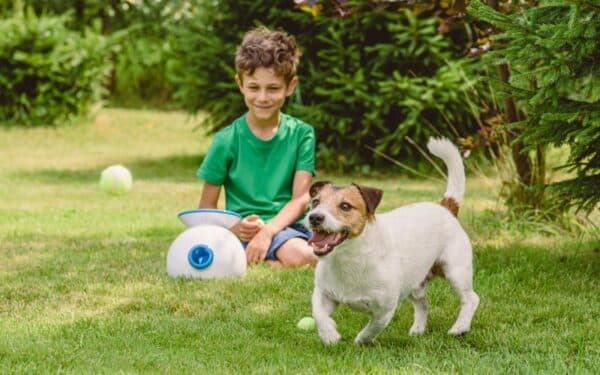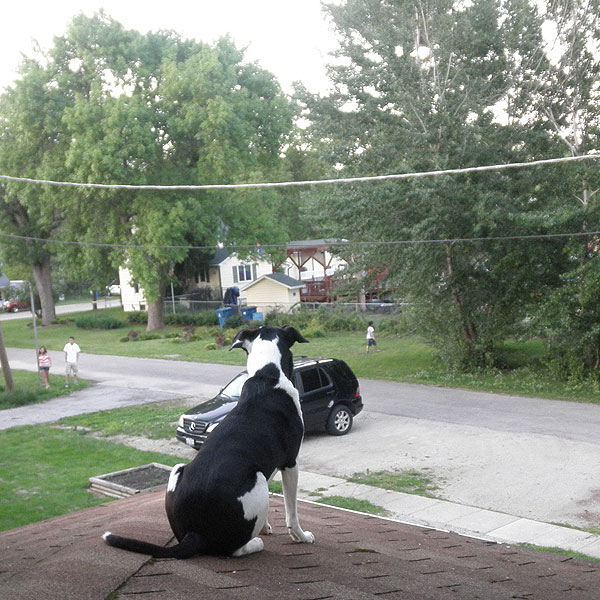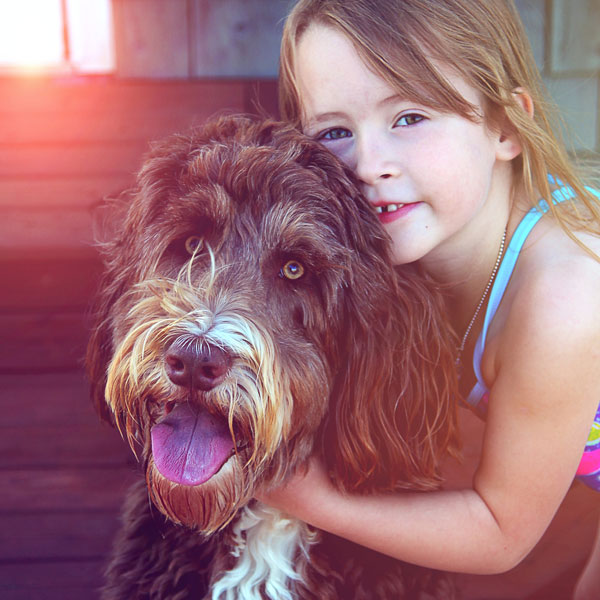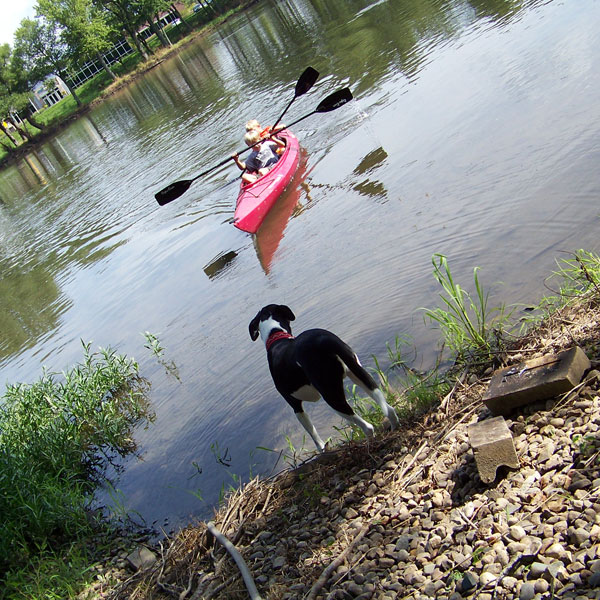One sunny afternoon I was working in my front yard, pulling weeds from a garden. Trucker was freely roaming nearby, sniffing greenery and snoozing on a bed of grass in the sunlight.
I saw two young girls, perhaps eight or nine years of age, walking down the dead-end road in front of our home. They were pushing dolls in strollers and chatting as they journeyed. Trucker stood and watched them attentively. One girl had met Trucker in the past and knew his name. I asked him, “Do you see the girls?”
About this time, I heard the one girl say, “Hi Trucker!” He trotted toward her in the lane, looking back at me with questioning eyes, as if he was asking, “Is it okay that I go?”
“You can see them,” I told him and he joined them, receiving pats on his head as he sniffed their faces and strollers.
Trucker loves children. He came into my life at the age of five, and I only know that he was around children at some point in his past. He obviously loved them and still befriends children today.
Because of his size — a tall, long, 60 pounds of pooch — he sometimes startles children when they first see him approaching. Due to his height, he can stand before small children and look them directly in their eyes. He somehow knows to approach them slowly, head down slightly with question. When the ice is broken, he mingles with them like a school playmate.
He’s playful like a child and he’s amazingly empathetic, sensing if an adult or child is in need of a hug.
That afternoon, the girls with strollers proceeded on and Trucker walked with them. I laughed, watching him go, walking between girls with pink strollers. I waited for him to realize that he was venturing farther from home. When he realized that I wasn’t with him, he looked back and I called him to return. I’m quite sure he would have spent the day with the girls if I let him and he would have allowed them to dress him up and paint his toenails.
He and I visited a pet store one afternoon and a boy, approximately 12, approached Trucker to say hello. Trucker sniffed the boy’s hand and proceeded to stand on his hind legs, placing his front paws on the boy’s shoulders. The boy laughed and seemed surprised as I told him, “It’s okay. He likes to hug people.”
Surprisingly, the act of hugging is something Trucker either learned from a past owner or he expresses it naturally.
My landlords live next door to us, along a river. One day their young nephews were visiting and enjoying a kayak trip in shallow water. Trucker heard their laughter and dashed over to the house to inspect. I stood secretly at a distance watching them interact. Trucker stood between them as their uncle pulled the kayak to water. Trucker waded in, watching the boys climb into the vessel and slide away. He then waited beside their uncle, watching the boys out in the river and anticipating their return.
Their uncle didn’t know I was observing. He captured photos of Trucker and the boys. When they came back to shore, Trucker was so excited that he followed the boys to their house and in the door like he was part of the family. I stood nearby shaking my head, smiling with disbelief.
A neighbor on the other side of our home was spending time with her toddler granddaughter one afternoon. Trucker heard the child’s voice and walked over to see her. I told him to wait until I asked the girl’s mother if the little one was afraid of dogs. She responded, “I don’t know. We will find out.” Trucker slowly approached her, eye-to-eye, and sniffed her nose. She smiled and laughed and they were instantly friends. He later tried to climb into their car with the child.
One of the funniest child-and-Trucker stories yet involves three neighbor children and a large white bucket. Two of the children had been slightly scared of Trucker in the past when he barked and walked over to their yard. On this day, all three children were gathered by tall grass along the riverbank at the end of my driveway. The oldest child was holding a bucket and sporadically making playful screams, jumping back from whatever was inside.
Trucker saw them and walked towards them with determination. At first I feared they’d scream and run from him too, but Trucker slid between them so gently that they didn’t realize he was there. When two of the children noticed his head between them, they looked back and saw me.
“What do you have in there?” I asked them. By now Trucker had his head inside of the bucket, sniffing the prisoner — a large toad they had found in their basement. The kids laughed at Trucker’s bravery, and he jumped backwards with them each time the toad hopped. I laughed with them and helped release the toad into the grass.
Ever since Trucker showed such bravery against the baseball-sized toad, the children seem to have no more fear of him when he strolls over to their yard to join in a game of soccer.
Trucker’s interaction with children continues to bring joyful tears to my eyes. After all, he is a child at heart.
Does your dog love kids? Does she interact with children well? Tell us about it in the comments!
Learn more about dogs with Dogster:
- The 10 Biggest Misconceptions About Guide Dogs for the Blind
- 6 Things to Remember When You Have a Fearful Dog
- Four Things You Should Know About Your Dog’s Growl
Featured Image Credit: alexei_tm, Shutterstock

